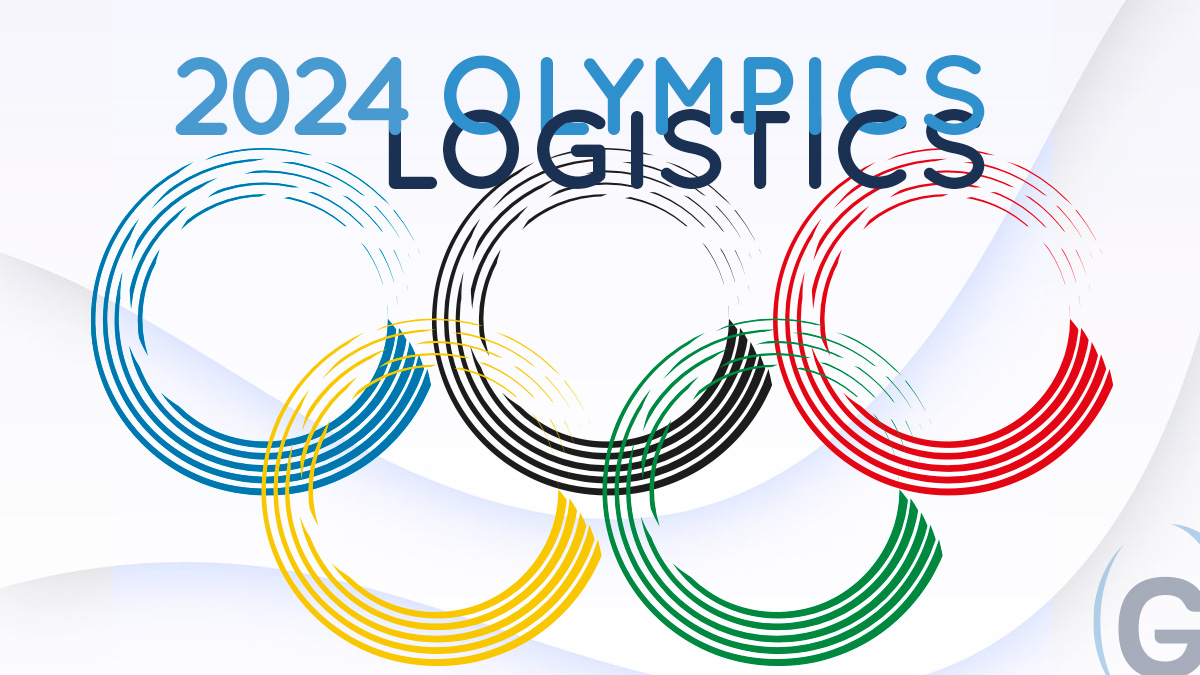The 2024 Olympics in Paris that started from 26th July and will continue till 11th August, represent not just a celebration of athletic excellence but also a monumental challenge in logistics. Coordinating the influx of athletes, spectators, and equipment necessitates rigorous planning and seamless execution. With the Paris Olympics underway, today we are publishing a blog about the complexities of managing logistics for such a grand event, highlighting key strategies and challenges.

Planning and Coordination of the Logistics of 2024 Olympics
Planning for the logistics of the 2024 Olympics began years in advance. The main objective was to ensure the seamless transportation and accommodation of over 10,500 athletes from around the world, along with officials, media personnel, and millions of spectators. This required a multi-faceted approach, involving coordination between various stakeholders including government agencies, transport companies, hospitality providers, and security forces.
Key Players responsible for the Logistics of Paris Olympics
The two Key players responsible for organizing the logistics of Olympics 2024 are CMA CGM and its logistics arm, Ceva Logistics. Together they have taken on significant roles in this effort. Their expertise in freight forwarding, supply chain management, and transportation logistics has been pivotal in planning and executing the complex logistics operations required for the Olympics.
Together they have made over 7,000 last mile trips to deliver the equipment needed for the games. For this they had to arrange a fleet of over 300 trucks and vans. Additionally, they were responsible for assembling over 900,000 pieces of equipment in the Olympics venue including surfboards, poles, firearms, trampolines, boats, etc. They were also responsible for the delivery, dismantling and assembling of over 17,000 beds for the teams of athletes in the Olympic Village. They also moved over 170,000 pallets and more than 250 containers. Lastly, they were required to store, transport, and assemble nearly 650 advanced mobility vehicles and 2,745 e-vehicles for moving around the venues.
For the event alone they hired around 700 new employees. Simply put, their logistics activities included but were not limited to international transportation, customs clearance, storage, freight services, special freight moving, delivery and on-site logistics.
Transport Infrastructure
One of the foremost challenges was enhancing the transport infrastructure of Paris and its surrounding areas. The city’s existing public transport system had to be upgraded to handle the increased load. Additionally, special lanes were designated on major roads for Olympic vehicles to ensure swift and uninterrupted movement.
Moreover, the use of environmentally friendly transport options was also prioritized. Electric buses and bicycles were promoted to reduce carbon emissions, in line with the sustainability goals of the 2024 Olympics. Ceva Logistics has been instrumental in providing eco-friendly logistics solutions, such as electric delivery vehicles and optimizing routes to minimize emissions.
Athlete and Equipment Transport
Transporting athletes and their equipment posed another significant challenge. They developed custom-designed logistics solutions to handle the specialized equipment required for various sports. For instance, the logistics for equestrian events involved the safe and comfortable transport of horses, which required temperature-controlled and spacious vehicles.
Athletes’ schedules were meticulously planned to ensure they arrived at their events on time and with minimal stress. Moreover, dedicated transport services were provided to shuttle athletes between their accommodation and event venues, ensuring punctuality and safety. CMA CGM’s extensive network of shipping routes and Ceva Logistics’ expertise in supply chain management have ensured that sports equipment from all over the world arrives in Paris safely and on time.
CMA CGM Container Ship Joins Historic Nautical Parade
On May 8th, the CMA CGM Greenland, a cutting-edge container ship with a capacity of 15,000 TEUs and powered by Liquefied Natural Gas (LNG), proudly participated in a grand nautical parade in Marseille. This event celebrated the arrival of the Olympic flame, marking a significant moment in the lead-up to the 2024 Paris Olympics.
A Historic Procession
The CMA CGM Greenland was part of a remarkable fleet of over 1,024 ships that sailed in unison to commemorate this special occasion. The parade featured a diverse array of vessels, each contributing to the maritime spectacle that captivated the city. Among these was the iconic three-masted ship Belem, which had the honor of carrying the Olympic flame. Therefore, the Greenland’s participation underscored the significance of the maritime industry in supporting global events and fostering international unity.
CMA CGM Greenland: A Symbol of Innovation and Sustainability
The CMA CGM Greenland is not just any container ship; it represents a new era of sustainable shipping. Powered by LNG, the ship significantly reduces greenhouse gas emissions, aligning with global efforts to combat climate change. Its participation in the parade highlighted the maritime industry’s commitment to sustainability and innovation.
The sight of these two majestic vessels together was a powerful symbol of tradition meeting modernity. The Belem, a vessel with a storied past, carrying the flame that has symbolized the spirit of the Olympics for generations, and the Greenland, a modern marvel of maritime engineering, epitomizing the future of sustainable transport.
A Celebration of Maritime Heritage
The nautical parade in Marseille was not only a celebration of the Olympic spirit but also a tribute to the city’s rich maritime heritage. Marseille, with its historic port, has long been a hub of maritime activity. The inclusion of CMA CGM Greenland in the parade was a nod to the city’s continued importance in global shipping and logistics.
Conclusion
The logistics of the 2024 Olympics in Paris represent a colossal undertaking, requiring years of meticulous planning and coordination. They carefully managed every aspect, from enhancing transport infrastructure to ensuring the safety and comfort of athletes and spectators, to deliver a successful and memorable event. Furthermore, the integration of sustainability initiatives underscored the commitment to making the 2024 Olympics not just a celebration of sports, but also a model for future events. As the world gears up to witness the athletic prowess on display, the logistical efforts behind the scenes will play a crucial role in ensuring the smooth execution of the games.


